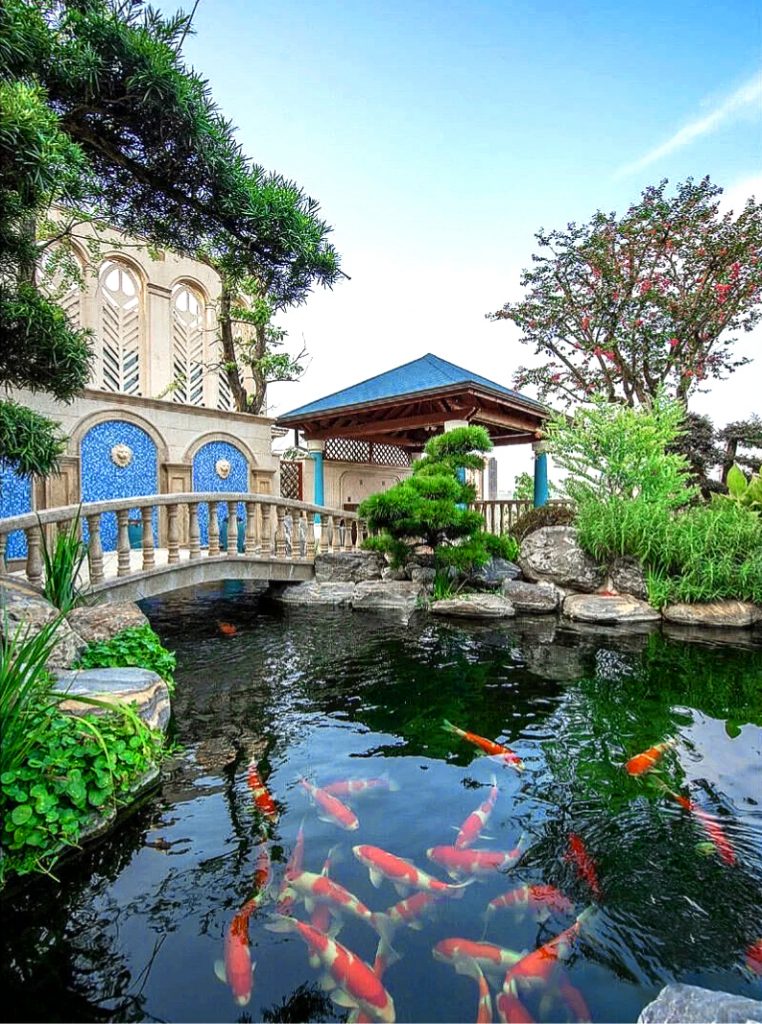Project Cases
contact details
 Ollies (Guangzhou) Recreation and Sports Equipment Co.
Ollies (Guangzhou) Recreation and Sports Equipment Co.Tel: (020) 82686289
Fax: 020-82694853
Headquarter: No.31-37, Xincun 2 Road, Shangjiang North Street, Dongzhou Village, Xintang Town, Zengcheng City, Guangzhou, Guangdong, China
Feeding a lot of koi doesn't necessarily make them strong.
I hear a lot of fish friends say, "After feeding so many good things to their Koi, why can't they grow strong?" A lot of fish lovers ask: "Why can't my koi grow big or fat?" Fishers in the hot areas of the south have the experience that koi grows best in May and June, but in the hot months of July and August, the fish grows slower, why is that?
"Slow water for fish, fish will be fat; fast water for fish, fish will be strong." Think about it, every day to feed the koi to eat, especially in the case of the increase in the amount of food in the fall, if the water flow is slow, the koi eat the end of the motionless, the lack of movement, naturally long fat. And if you properly adjust the speed of the water flow, the koi will also swim hard and fast, the body gets exercise, naturally develop good muscles, become strong.

The flow rate of the pool (can also be said to be the amount of circulation) is expressed in terms of the number of water exchanges per hour, generally according to the amount of dissolved oxygen content in the water and the amount of organic nitrogen to regulate the flow rate. Dissolved oxygen in the water is high, the amount of ammonia and nitrogen is low, the flow rate can be a little smaller, and vice versa should increase the flow rate. The consumption of oxygen in the water is related to the density and specification of the fish pond. Theoretically, you can also be based on a certain stage of the fish pool volume and capacity, the species raised at the time of the water temperature, specifications of the oxygen consumption rate to calculate the oxygen consumption per unit of time, and then calculate the size of the required flow. The specific formulas are listed below for reference only:

Here is another tricky problem, feed more koi pull more, plus the accumulation of residual bait, the water body dissolved oxygen is reduced, the possibility of water quality deterioration increased dramatically, water quality problems will return to the health of the koi itself, so feeding is also a technical job, according to the different temperature and koi ecological characteristics of the appropriate adjustment.

Going back to the topic just mentioned, if feeding or fish intake is cut in half, is the weight gain of the fish likewise cut in half? No. Rather, it is basically just enough to sustain the consumption for life and activity, and no weight gain or only slight weight gain, or perhaps even weight loss, is possible. Koi are cold-blooded animals and as the temperature drops, the feeding rate should be adjusted accordingly. If too much is fed, it is likely that the koi will suffer from protruding eyes or indigestion and develop enteritis.
So how exactly do you feed it?
--Feeding must be regular and quantitative, with fewer meals and more meals, in order to reduce the production of carbon dioxide and harmful substances. Choosing high-quality bait, perfecting the fish pond filtration system and timely treatment of food residues and feces at the bottom of the pond can directly reduce ammonia, nitrite and other harmful substances, which in turn reduces the consumption of dissolved oxygen and enhances biochemical filtration.
Related content
- Homeostatic regulation of fish pond water quality: a systematic solution based on nitrification kinetics and nutrient thresholds
- Koi Pond Maintenance and Protection Guide during the Rainy Season | The Veteran Driver's Handbook of Dampness and Disease Prevention
- Pool water circulation system maintenance guide, goodbye to cloudy water quality to create four seasons of translucent "liquid sapphire".
- From zero to professional: a complete guide to pool equipment configuration that even a beginner can understand
- The Golden Ratio of Swimming Pool Ventilation and Dehumidification Systems: The Balancing Act of Airflow, Humidity and Energy Consumption
- Specific benefits of dehumidifiers for new swimming pools
- Industrial solutions for fish pond water quality management: How to break through the bottleneck of traditional operation and maintenance of filtration systems?